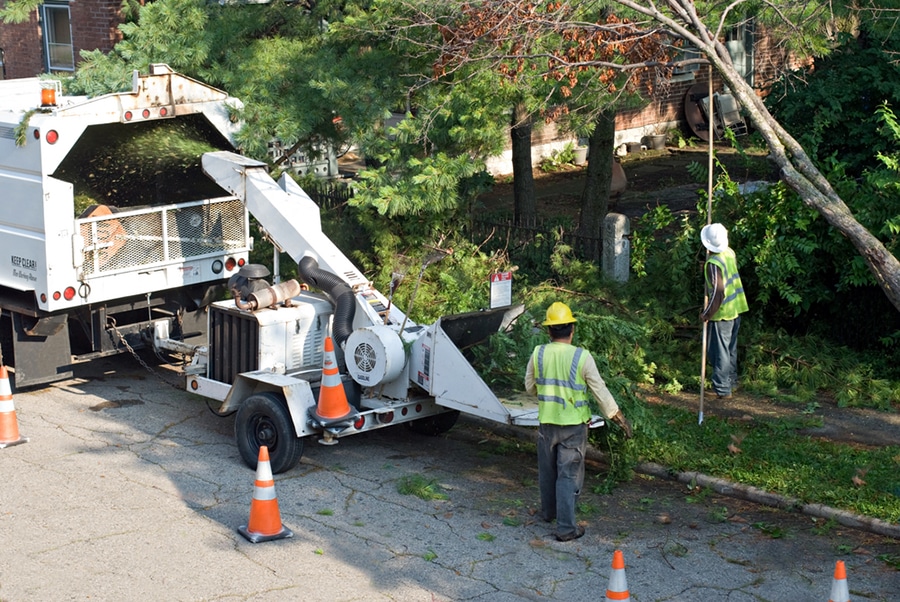Are you ready for the next storm that barrels through Peoria, Illinois? Knowing how to prepare for severe weather is not just a good idea; it's a necessity for protecting your family, your home, and your peace of mind. In a region prone to thunderstorms, tornadoes, and the occasional blizzard, being proactive can make all the difference.
The unpredictable nature of Midwestern weather demands a proactive approach. Understanding the risks specific to Peoria and the surrounding areas is the first step in effective storm preparation. This includes knowing the types of storms most likely to impact the region, their typical frequency, and the specific vulnerabilities of your home and property. Preparing goes beyond simply having a flashlight and a radio; it's about creating a comprehensive plan, assembling essential supplies, and staying informed about weather updates.
Let's delve into what constitutes effective storm preparation in Peoria, Illinois, covering essential aspects from assessing risks and creating emergency plans to securing your home and assembling disaster kits. This knowledge can empower you to face any meteorological challenge that comes your way with confidence and preparedness.
Storms in Peoria, IL, can manifest in various forms, each posing unique threats. Thunderstorms are a frequent occurrence, bringing heavy rain, strong winds, and lightning, which can cause power outages and damage to trees and property. Tornadoes, while less frequent, are a significant threat, especially during the spring and early summer months. Knowing the difference between a tornado watch and a tornado warning is crucial; a watch means conditions are favorable for tornadoes to develop, while a warning means a tornado has been sighted or indicated by radar and immediate action is necessary.
Another hazard is flooding. Peoria is located near the Illinois River and its tributaries, making it susceptible to flash floods and river flooding, particularly during heavy rainfall events. This necessitates awareness of flood zones, elevation levels, and the potential for water damage. Winter storms, including blizzards and ice storms, can also bring significant challenges, leading to power outages, hazardous travel conditions, and the risk of frozen pipes.
The first step in storm preparation is to assess your risks. Identify the specific hazards that pose the greatest threat to your home and family. Consider your home's location, age, and construction materials. Are you in a flood-prone area? Are there trees near your home that could fall during a windstorm? Does your roof need repair? Assess your insurance coverage to ensure it adequately covers storm-related damages.
After assessing your risks, create an emergency plan. This plan should include the following elements:
- Communication Plan: Determine how your family will communicate if separated. Designate an out-of-state contact person to act as a central point of contact. Ensure everyone knows their phone numbers and emergency contacts.
- Evacuation Plan: Identify safe evacuation routes and shelters in your area. Know where the nearest storm shelter or designated safe room is. Practice your evacuation plan regularly.
- Meeting Place: Establish a meeting place outside your home in case of evacuation and a secondary meeting place outside your neighborhood.
- Shelter-in-Place Plan: Designate a safe room in your home, preferably an interior room on the lowest level, away from windows, doors, and exterior walls. If you don't have a basement, consider an interior closet or bathroom.
- Pet Plan: Include your pets in your emergency plan. Ensure you have carriers, food, water, and identification tags for each pet. Know the pet-friendly shelters or hotels in your area.
- Medical Needs: Identify any family members with special medical needs and make sure you have necessary medications, medical devices, and backup power for life-sustaining equipment.
With a plan in place, the next step is to assemble a comprehensive disaster kit. This kit should contain essential supplies to sustain your family for at least three days. Here are the essentials:
- Water: One gallon of water per person per day for drinking and sanitation.
- Food: Non-perishable food items, such as canned goods, dry pasta, energy bars, and dried fruits. Have a manual can opener.
- First Aid Supplies: A well-stocked first-aid kit, including bandages, antiseptic wipes, pain relievers, and any personal medications.
- Lighting: Flashlights with extra batteries or hand-crank flashlights.
- Radio: A battery-powered or hand-crank radio to receive emergency broadcasts.
- Communication: Cell phones with chargers and a portable charger.
- Tools: A multi-tool, duct tape, and work gloves.
- Sanitation: Toiletries, toilet paper, and hand sanitizer.
- Clothing: Extra clothing, including warm layers, waterproof gear, and sturdy shoes.
- Cash: ATMs may be unavailable during power outages.
- Important Documents: Copies of important documents, such as insurance policies, medical records, and identification. Keep them in a waterproof bag.
- Pet Supplies: Food, water, leashes, and any necessary medications.
Securing your home is crucial for minimizing damage during a storm. This involves a range of preventative measures:
- Inspect and Maintain Your Roof: Ensure your roof is in good condition. Repair any leaks or damaged shingles. Trim tree branches that could fall on your roof.
- Secure Doors and Windows: Reinforce doors and windows, especially during high winds. Consider installing storm shutters or impact-resistant windows.
- Clear Gutters and Downspouts: Clean your gutters and downspouts to ensure proper drainage.
- Anchor Outdoor Objects: Secure or bring inside outdoor furniture, grills, and other items that could be blown away by high winds.
- Protect Your Utilities: Consider installing a whole-house generator or a portable generator to provide backup power. Turn off your utilities (water, gas, and electricity) if instructed by local authorities.
- Flood Protection: If you live in a flood-prone area, consider installing flood vents, elevating appliances, and having sandbags on hand.
Staying informed is paramount during storm season. There are several ways to stay informed about severe weather in Peoria:
- Weather Alerts: Sign up for local weather alerts from the National Weather Service (NWS) or other reliable sources, such as local news channels or weather apps.
- NOAA Weather Radio: Purchase a NOAA weather radio to receive emergency broadcasts.
- Local News: Monitor local news channels and radio stations for weather updates and instructions from local authorities.
- Social Media: Follow local emergency management agencies and news organizations on social media for real-time updates.
- Weather Apps: Utilize weather apps on your smartphone for the latest forecasts and alerts.
During a storm, it's essential to take the following safety precautions:
- Stay Indoors: Seek shelter indoors during severe weather. Avoid windows and doors.
- Listen to Alerts: Pay close attention to weather alerts and heed the instructions of local authorities.
- Avoid Travel: Avoid unnecessary travel during storms.
- Electrical Safety: If your home loses power, avoid using electrical appliances. If you must use a generator, do so outside and away from windows and doors.
- Flooding: If you encounter floodwaters, turn around. Do not drive or walk through floodwaters.
- Tornado Safety: If a tornado warning is issued, go to your designated safe room or seek shelter in an interior room on the lowest level of your home, away from windows and doors.
After a storm, its essential to assess the damage and take appropriate actions:
- Assess Damage Safely: Once the storm has passed and it's safe, assess the damage to your home and property. Document the damage with photos and videos.
- Report Damage: Report any damage to your insurance company and local authorities.
- Avoid Downed Power Lines: Stay away from downed power lines and report them to the local utility company.
- Clean Up Debris: Once it's safe, begin cleaning up debris from your property.
- Check for Hazards: Be aware of potential hazards, such as gas leaks, damaged structures, and standing water.
- Stay Informed: Continue to monitor local news and weather updates for recovery information.
Beyond individual preparedness, community involvement is crucial. Participate in community preparedness efforts, such as neighborhood watch programs or emergency response teams. Encourage your neighbors to prepare for storms, share information and resources, and support each other during and after a storm. Being part of a prepared community strengthens the collective resilience of Peoria.
Storm preparation is an ongoing process, not a one-time event. Regularly review and update your emergency plan and disaster kit. Replace expired food and medications. Check the batteries in your flashlights and radios. Make sure your insurance coverage is up-to-date. Continual vigilance ensures you remain prepared for whatever weather challenges Peoria faces.
Here's a table summarizing key actions for storm preparation in Peoria, Illinois:
| Phase | Action | Details |
|---|---|---|
| Assessment | Identify Risks | Assess your homes vulnerabilities (flood zones, tree proximity, roof condition). Consider insurance coverage. |
| Planning | Create an Emergency Plan | Develop a communication plan, evacuation routes, meeting places, shelter-in-place plans, and a pet plan. |
| Supplies | Assemble a Disaster Kit | Include water, non-perishable food, first-aid supplies, lighting, radio, communication tools, tools, clothing, cash, important documents, and pet supplies. |
| Home Protection | Secure Your Home | Inspect and maintain the roof, secure doors and windows, clear gutters, anchor outdoor objects, and protect utilities. |
| Information | Stay Informed | Sign up for weather alerts, have a NOAA weather radio, monitor local news and social media, and use weather apps. |
| During the Storm | Take Safety Precautions | Stay indoors, listen to alerts, avoid travel, practice electrical safety, avoid floodwaters, and seek shelter from tornadoes. |
| After the Storm | Assess and Respond | Assess damage safely, report damage, avoid downed power lines, clean up debris, check for hazards, and stay informed. |
Preparing for storms in Peoria, IL, requires diligence, planning, and a proactive approach. By assessing your risks, creating an emergency plan, assembling a disaster kit, securing your home, staying informed, and taking necessary precautions during a storm, you can significantly reduce the potential for damage, injury, and disruption. Continuous learning, community involvement, and a commitment to ongoing preparedness will fortify your resilience against any meteorological challenge that comes your way, ensuring that you, your family, and your community are ready for whatever the weather brings.


